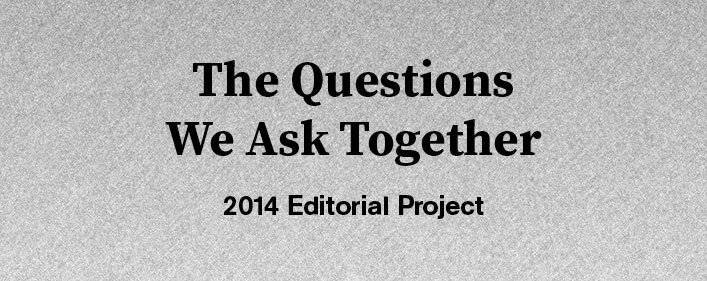What happens to a project when AFTER you call it art?
The archivist from the Berkeley Art Museum’s Conceptual Art Study Center holding an artifact from Tom Marioni’s Museum of Conceptual Art Archive Photo: Lexa Walsh.
Finding myself in the midst of well-treated archives at Berkeley Art Museum’s Conceptual Art Study Center recently, surrounded by ephemeral treasures such as Tom Marioni’s “Avocado Box,” handled with white gloves only, was a real treat. Equally exciting was going through 20 or so semi-smashed banker boxes at Guillermo Gomez-Peña’s office in San Francisco. As a volunteer archivist, I browsed and chose what gets to stay and what gets to go––not an easy decision for the amateur archivist. Handwritten manifestos, contracts from big productions, letters: of course. Phone bills? Tax documents? Toss.
My thoughts on value were recently questioned by Rick Prelinger, co-founder of the Prelinger Library. Gomez-Peña’s phone bills from 1984 may look boring, but might tell us with whom the artist was cavorting, while his bank statements, headed for the shredder, may tell us who was funding the Arts at the time. Gomez-Peña has a radical idea for his archival materials: to curate “Border Boxes,” Fluxus-style artworks, and sell them. Though I question if breaking the archive apart is a good idea, spreading it around the world to collectors and museums sounds appealing.
These questions of value are poignant, considering the trend in Digital-is-God approach to archiving. I am witnessing the threat of an important public art poster series to be thrown away by a major arts advocacy organization. I see no public record of another major institution’s legacy, online or otherwise, because a recent director didn’t prioritize it. Another museum has no institutional or online memory of its bountiful Education initiatives. Meanwhile, I just counted and rubber band bound 230 extra postcards from a project I did a few years ago. Bad extremes.
We makers of socially engaged art have some big questions on our hands. Yes, we tend to produce some beautiful takeaways, and possibly well-designed websites. We hope we keep some of this material culture for the future. But what about the process? If you are anything like me, a lot of your practice happens via email and meetings. How are future researchers going to dig through our digital legacies (unless we are a person of interest to the NSA)? An example of a successful web-based archive is that of the Oakland Standard. That is, until the museum stops paying the hosting bill.
Last year whilst doing a collaborative Museum Hackathon, my group was given an abstract sculpture with a title, date and a relatively unknown artist’s name. Thanks to the archival material, including letters between the artist and curator, we learned about the piece and that it had never been shown. We were able to find meaning and create empathy for both the artist and this poor lonely sculpture that had never been out of its crate.
What are you all doing to keep your legacies researchable for the future? Are you keeping those notes and sketches and emails and ephemera? Who is going to be the steward of your memory?
About the contributor: Lexa Walsh is an interdisciplinary socially engaged artist based in Oakland, CA. She has an 8” stack of ephemera from the last three Open Engagement conferences in case anyone is in need. deyoung.famsf.org/
